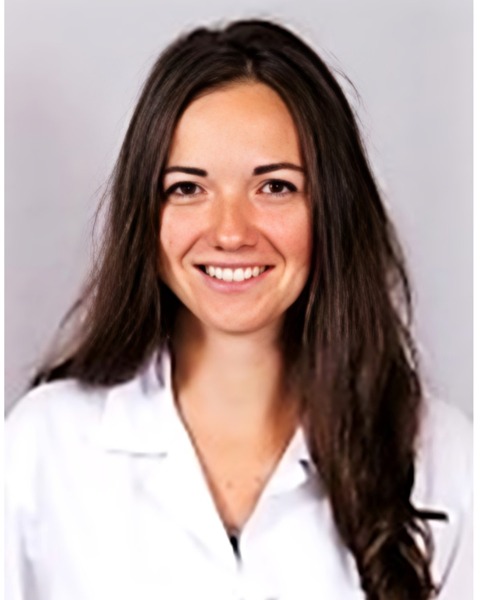Tumor
Sequential neural network in prediction of invasive pituitary adenomas, beyond Ki-67 index
Sequential Neural Network in Prediction of Invasive Pituitary Adenomas, Beyond ki-67 Index

Daniela Stastna, MD Phil MUDr
Honorary reserach specialist
University of Cambridge
Presenting Author(s)
Introduction: Invasive pituitary adenomas(PA) remain not only surgical challenge,but also an enigma with poorly understood underlying pathophysiology.The literature considers PAs with Knosp grade 3-4 as invasive,some even Knosp 2. The literature suggests the positive correlation of high Ki-67 index(≥3) and invasive/rapidly growing PA.Though currently,there is no significant association of recurrent non-invasive PA and Ki-67_index.Some authors suggest role of underlying genetic mutations,such as USP8,PIT1.
We aimed to create a radiomic model to predict the invasive/aggressive behavior of PA beyond currently used Ki-67 index.
Methods: We retrospectively analysed 50 patients with non-fonctional PAs,operated in our center.Demographic,biological,pathological,and radiological data were collected. We consider Knosp grade 2-4 as invasive,due to breach of the inter-carotid compartment.
Pre-/postoperative contrast-enhanced-T1-weighted,T2-weighted MRI were preprocessed.The 400 complex features were extracted for both sequences.Features associated with shape were excluded,in order to avoid SNN-model simplification. The sequential 3-layer neural network(SNN) model was trained on features.(Python,Keras).The performance metrics(validation_accuracy,loss) were assessed.Univariate analysis was performed to establish the relation between index Ki-67 and Knosp grade 2-4(chi-squared,confusion matrix).
Results: Our cohort included 50 patients with non-functional PAs: 25 with non-invasive (Knosp 0-1scores) and 25 invasive PAs (Knosp 2-4).
The chi-squared test revealed significant association between ≥3 Ki-67 and invasive PA(Knosp 2-4)(p=0.036). However, the performance of dichotomized Ki-67 index is disputable: accuracy=53%,sensitivity=21%,specificity=90%. The proportion of invasive PA among PA with high Ki-67 index was 67% compared to 30% of invasive PA among low Ki-67.
Prediction of invasive character PA excluding shape-based features:Our SNN model achieved validation_accuracy of 81%,validation_loss of 21% on 50 iterations.
Conclusion : Our SNN model achieved significantly higher prediction accuracy for invasive PA than used Ki-67_index, based on shape-unrelated features. This suggests role of unknown genetic factors at play,yet to be discovered adn corraleted with radiomics.This model trained on larger dataset, has a potential to become usefull tool in management of high-risk PA in the future.
We aimed to create a radiomic model to predict the invasive/aggressive behavior of PA beyond currently used Ki-67 index.
Methods: We retrospectively analysed 50 patients with non-fonctional PAs,operated in our center.Demographic,biological,pathological,and radiological data were collected. We consider Knosp grade 2-4 as invasive,due to breach of the inter-carotid compartment.
Pre-/postoperative contrast-enhanced-T1-weighted,T2-weighted MRI were preprocessed.The 400 complex features were extracted for both sequences.Features associated with shape were excluded,in order to avoid SNN-model simplification. The sequential 3-layer neural network(SNN) model was trained on features.(Python,Keras).The performance metrics(validation_accuracy,loss) were assessed.Univariate analysis was performed to establish the relation between index Ki-67 and Knosp grade 2-4(chi-squared,confusion matrix).
Results: Our cohort included 50 patients with non-functional PAs: 25 with non-invasive (Knosp 0-1scores) and 25 invasive PAs (Knosp 2-4).
The chi-squared test revealed significant association between ≥3 Ki-67 and invasive PA(Knosp 2-4)(p=0.036). However, the performance of dichotomized Ki-67 index is disputable: accuracy=53%,sensitivity=21%,specificity=90%. The proportion of invasive PA among PA with high Ki-67 index was 67% compared to 30% of invasive PA among low Ki-67.
Prediction of invasive character PA excluding shape-based features:Our SNN model achieved validation_accuracy of 81%,validation_loss of 21% on 50 iterations.
Conclusion : Our SNN model achieved significantly higher prediction accuracy for invasive PA than used Ki-67_index, based on shape-unrelated features. This suggests role of unknown genetic factors at play,yet to be discovered adn corraleted with radiomics.This model trained on larger dataset, has a potential to become usefull tool in management of high-risk PA in the future.

.jpg)